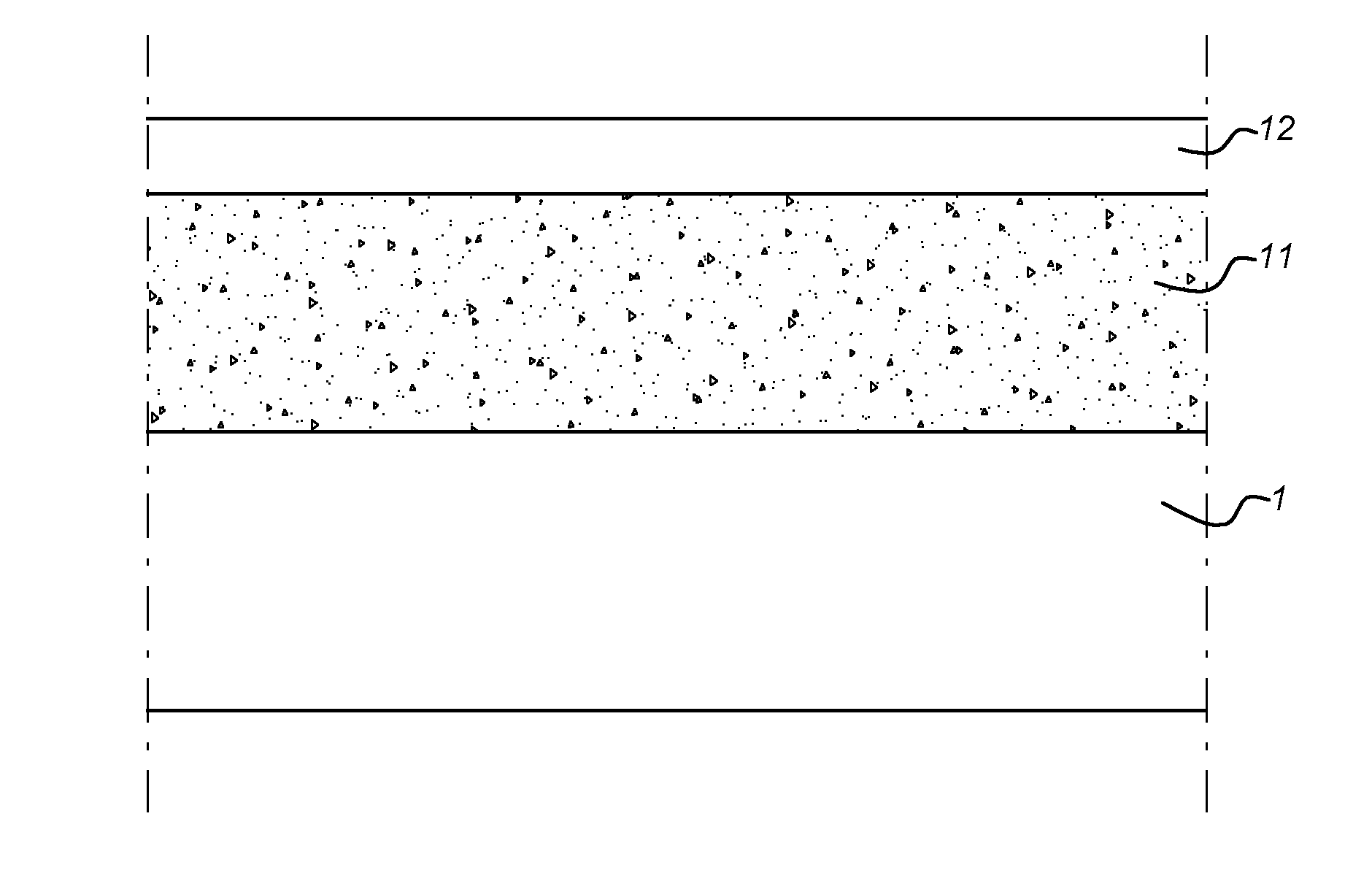Method and Device for Manufacturing a Barrier Layer on a Flexible Substrate
- Summary
- Abstract
- Description
- Claims
- Application Information
AI Technical Summary
Benefits of technology
Problems solved by technology
Method used
Image
Examples
examples
[0060]WVTR is determined using a Mocon Aquatran Model 1 which uses a coloumetric cell (electrochemical cell) with an minimum detection limit of 5*10−4 g / m2*day. This method provides a more sensitive and accurate permeability evaluation than the permeation measurement by using IR absorption. All measurements were done at 40° C. / 90% RH.
[0061]The free pore volume of the inorganic oxides was determined using the Lorentz-Lorenz equations by measuring the optical density difference of the material. Optical density difference was measured using a Woollam Spectroscopic Ellipsometer equipped with a vacuum chamber and heating stage.
[0062]Several samples (rolls) were prepared by depositing a layer on a substrate of PEN (100 μm thick) or PET (100 μm thick) using an atmospheric pressure glow discharge plasma apparatus as e.g. disclosed in WO2009104957 in a treatment space using a plasma power of 600 W, an excitation frequency of 200 kHz and a gas composition (85% N2 / 15% O2) using different precu...
PUM
| Property | Measurement | Unit |
|---|---|---|
| Temperature | aaaaa | aaaaa |
| Temperature | aaaaa | aaaaa |
| Fraction | aaaaa | aaaaa |
Abstract
Description
Claims
Application Information
 Login to View More
Login to View More - R&D Engineer
- R&D Manager
- IP Professional
- Industry Leading Data Capabilities
- Powerful AI technology
- Patent DNA Extraction
Browse by: Latest US Patents, China's latest patents, Technical Efficacy Thesaurus, Application Domain, Technology Topic, Popular Technical Reports.
© 2024 PatSnap. All rights reserved.Legal|Privacy policy|Modern Slavery Act Transparency Statement|Sitemap|About US| Contact US: help@patsnap.com










